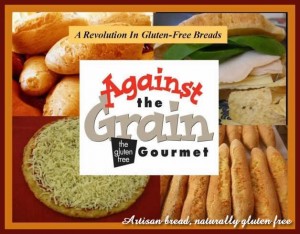Q: I know that I need to avoid most breads and baked goods on a gluten-free diet, but I hear that gluten can be “hidden” in other food products! If so, can you give me some guidelines on what I should be looking for 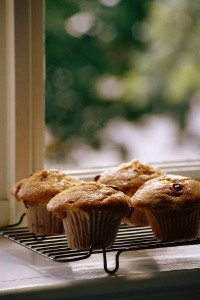 on food labels to discover these “hidden sources” of gluten? Help!
on food labels to discover these “hidden sources” of gluten? Help!
A. Gluten is the general name for the specific proteins in the grains wheat, rye and barley. As you mentioned, most breads, bagels, muffins, cereals, pasta, crackers, cakes and cookies are sources of gluten. However, there is a wide variety of not-so-obvious food and beverages that contain gluten (see chart below). Also in order to address the issue of “hidden” gluten you need to know about labeling regulations in the USA and Canada.
USA
The Food Allergen Labeling Consumer Protection Act (FALCPA) requires the eight major food allergens (including wheat) that are used as ingredients to be declared in plain English terms on the label of all prepackaged foods under the FDA’s jurisdiction. This includes all conventional foods, dietary supplements, infant formulas and medical foods. Major food allergens used as ingredients in flavorings, colorings, seasoning mixtures and incidental additives must also be listed. For example, if a snack food included seasonings containing wheat flour or wheat starch, it must be included on the label. However, distilled vinegar derived from wheat would not have to declare wheat on the label, as the distillation process removes the wheat protein and is not in the final product. FALCPA does not require barley or rye to be declared on the food label. The good news is that rye is not frequently used as an ingredient other than in rye bread or crackers, and barley is usually declared as barley malt, barley malt extract or barley malt flavoring.
The USDA regulates meat, poultry and processed egg products (including mixed food products containing more than 3% raw meat, 2% cooked meat or poultry). Unfortunately the USDA does not have mandatory food allergen labeling, so it is possible that wheat could be in a USDA regulated product and not included on the label. The good news is that the USDA does encourage manufacturers to voluntarily declare the food allergens on the label and many companies are complying with this recommendation.
CANADA
Current Canadian labeling regulations do not require manufacturers to declare all the components of ingredients on the food label (e.g., seasonings, modified food starch, hydrolyzed vegetable protein). This can be problematic as these ingredients may be derived from gluten-containing grains.
Health Canada (HC) and the Canadian Food Inspection Agency (CFIA) have recently developed proposed regulatory amendments to the Food and Drug Regulations called “Enhanced Labelling of Food Allergen and Gluten Sources and Added Sulphites”. Unlike the FALCPA in the US, the proposed Canadian amendments would require all gluten sources to be declared on the food label. These proposed amendments were published on July 26, 2008 and included a 90 day comment period. Health Canada is reviewing these submissions and preparing the final version of amendments. Until these regulations are published and become law, HC and CIFA strongly urge manufacturers to declare on the label the major food allergens and gluten sources, and their protein derivatives, and sulphites > 10 ppm when added as ingredients or components of ingredients. Many manufacturers are voluntarily declaring these ingredients on the food label in response to these proposed regulations. However, consumers will still need to call manufacturers about the source of the hydrolyzed protein, modified food starch and seasonings if it is not declared on the label.
WHAT ABOUT OATS?
Oats and oat products contain varying levels of gluten due to cross-contamination with wheat, barley and/or rye during growing, harvesting, transporting and processing. These oats must be avoided on a gluten-free diet. However, there are now specialty, pure and uncontaminated oats and oat products available from five North American companies (Bob’s Red Mill, Cream Hill Estates, FarmPure Foods, Gifts of Nature and Gluten-Free Oats). These pure oats are grown on dedicated fields, and harvested, transported and processed with dedicated equipment. Before adding pure oats to the gluten-free diet, it is recommended that your celiac disease be well-controlled and to check with your physician and dietitian for specific guidelines. For more information about oats see http://www.glutenfreediet.ca/oats.php
Examples of Food & Beverages That May Contain Gluten
|
Food Category
|
Food Products
|
Notes
|
|
Meats & Alternatives
|
Deli/luncheon meats, hot dogs, sausages, imitation seafood (e.g., Surimi)
|
May contain fillers made from wheat. Seasonings may contain hydrolyzed wheat protein, wheat flour or wheat starch.
|
|
|
Frozen burgers (meat, poultry and fish); Meatloaf
|
May contain fillers (wheat flour, wheat starch, bread crumbs) or seasonings (see above).
|
|
|
Meat substitutes (e.g., vegetarian burgers, sausages, nuggets)
|
Often contain hydrolyzed wheat protein, wheat gluten, wheat starch or barley malt.
|
|
|
Baked beans
|
Some are thickened with wheat flour.
|
|
|
Tempeh
|
A meat substitute made from fermented soybeans and millet or rice. Often seasoned with soy sauce (made from wheat).
|
|
Grains & Starches
|
Rice and corn cereals
|
May contain barley malt extract or barley malt flavoring.
|
|
|
Buckwheat flour
|
Pure buckwheat flour is gluten-free; however, some buckwheat flour may be mixed with wheat flour.
|
|
|
Buckwheat pasta (Soba noodles)
|
Some Soba noodles may be a combination of buckwheat flour and wheat flour.
|
|
|
Seasoned or flavored rice mixes
|
Seasonings may contain hydrolyzed wheat protein, wheat flour or wheat starch or have added soy sauce derived from wheat
|
|
Milk & Dairy
|
Cheese spreads, cheese sauces (e.g., Nacho), seasoned flavored shredded cheese
|
May be thickened with wheat flour or wheat starch. Seasonings may contain hydrolyzed wheat protein, wheat flour or wheat starch.
|
|
Snack Foods
|
Seasoned potato chips, taco (corn) chips, nuts, soy nuts
|
Some brands of plain potato chips contain wheat starch/wheat flour (e.g. Pringles). Seasoning mixes may contain hydrolyzed wheat protein, wheat flour or wheat starch.
|
|
|
Chocolates, chocolate bars
|
May contain wheat flour or barley malt flavoring.
|
|
|
Licorice
|
Regular brands of licorice contain wheat flour. Some brands of gluten-free licorice are available.
|
|
Condiments & Sauces
|
Soy sauce
|
Many brands are a combination of wheat and soy.
|
|
|
Malt vinegar
|
Made from malted barley. As this vinegar is only fermented and not distilled, it contains varying levels of gluten.
|
|
|
Salad dressings
|
May contain wheat flour, malt vinegar or soy sauce (made from wheat). Seasonings may contain hydrolyzed wheat protein, wheat flour or wheat starch.
|
|
|
Specialty prepared mustards
|
Some brands may contain wheat flour.
|
|
Miscellaneous
|
Cake icing and frostings
|
May contain wheat flour or wheat starch.
|
|
|
Baking powder
|
Most brands contain cornstarch which is gluten-free. However, some brands may contain wheat starch.
|
|
|
Cooking sprays
|
Baking cooking spray may contain wheat flour or wheat starch.
|
|
Beverages
|
Flavored or herbal teas, flavored coffees
|
May contain barley malt flavoring. Some specialty coffees may be prepared with a chocolate-chip-like product that contains cookie crumbs.
|
|
|
Beer, ale and lager
|
Made from malted barley. Some brands of gluten-free beer are now available
|
|
|
Alcoholic cooler beverages
|
May contain barley malt.
|
Excerpts and adapted from:
Gluten-Free Diet: A Comprehensive Resource Guide- Revised and Expanded Edition, Shelley Case, RD, Case Nutrition Consulting Inc, 2008 www.glutenfreediet.ca
Note: Ask Shelley Case is a feature of BeFreeForMe.com. It is published the second Tuesday of each month. Shelley Case is a Registered Dietitian, Consulting Dietitian, Speaker and Author of Gluten-Free Diet: A Comprehensive Resource Guide.
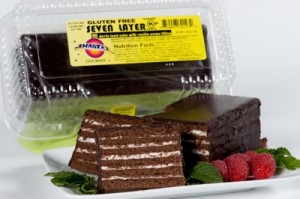 WIN-It-Wednesday’s sponsor is Shabtai Gourmet. If you haven’t tried these bakery items yet – you MUST! Shabtai Gourmet bakery makes being gluten and allergen free so much easier!
WIN-It-Wednesday’s sponsor is Shabtai Gourmet. If you haven’t tried these bakery items yet – you MUST! Shabtai Gourmet bakery makes being gluten and allergen free so much easier! on food labels to discover these “hidden sources” of gluten? Help!
on food labels to discover these “hidden sources” of gluten? Help!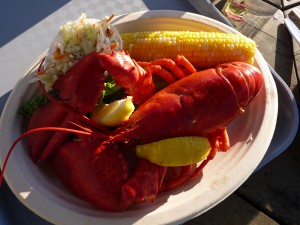
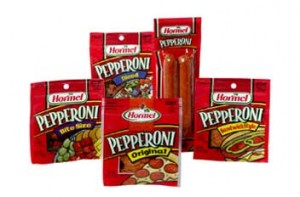
 hope to host the Win-It-Wednesday feature as many weeks as possible. So keep checking back each Wednesday for your chance to WIN!
hope to host the Win-It-Wednesday feature as many weeks as possible. So keep checking back each Wednesday for your chance to WIN!